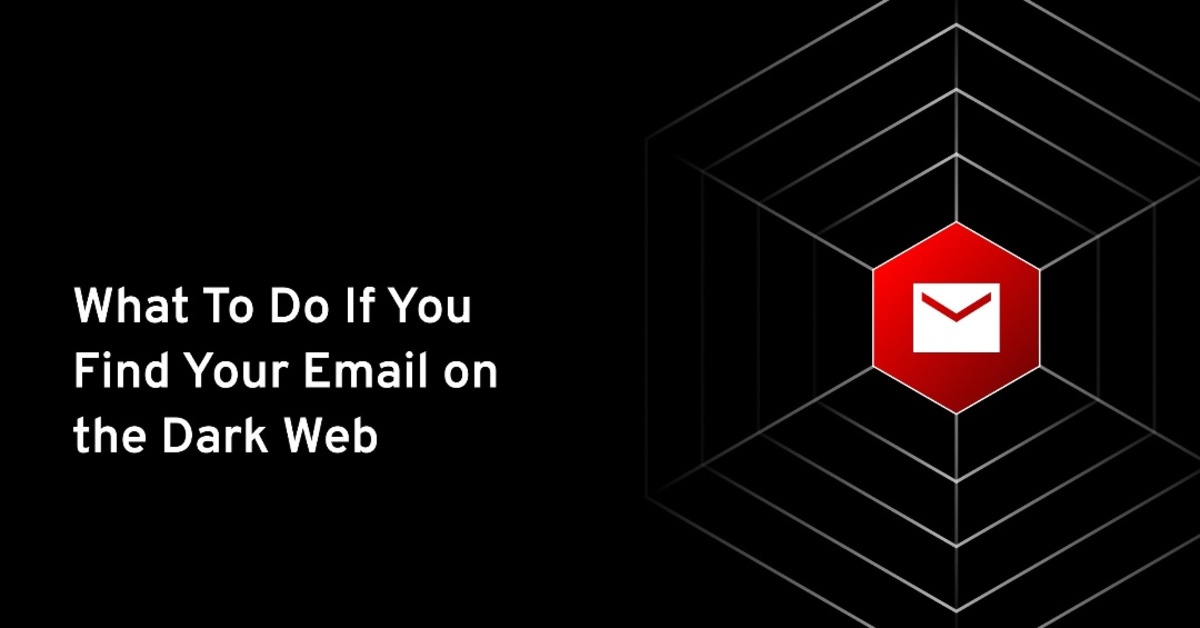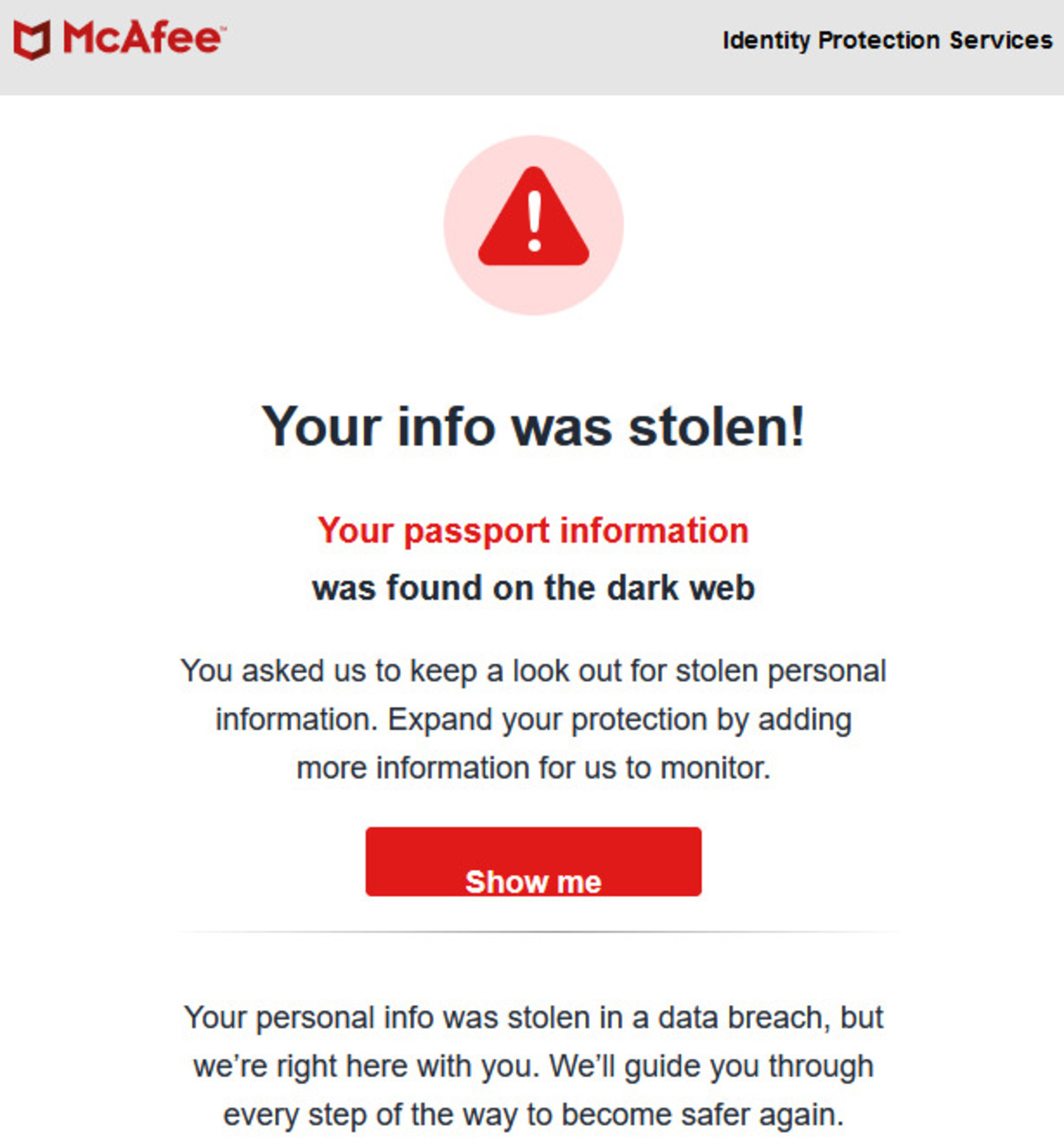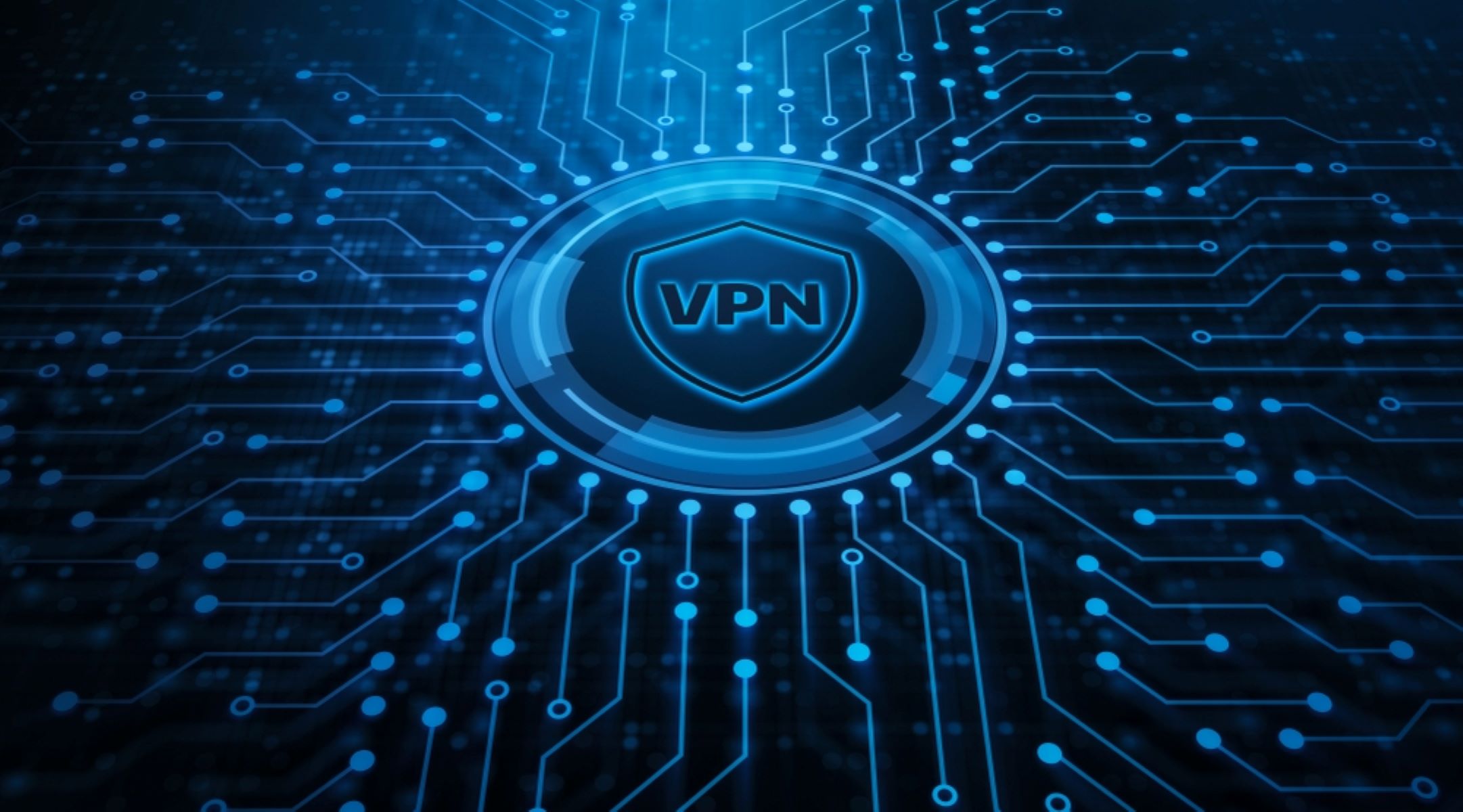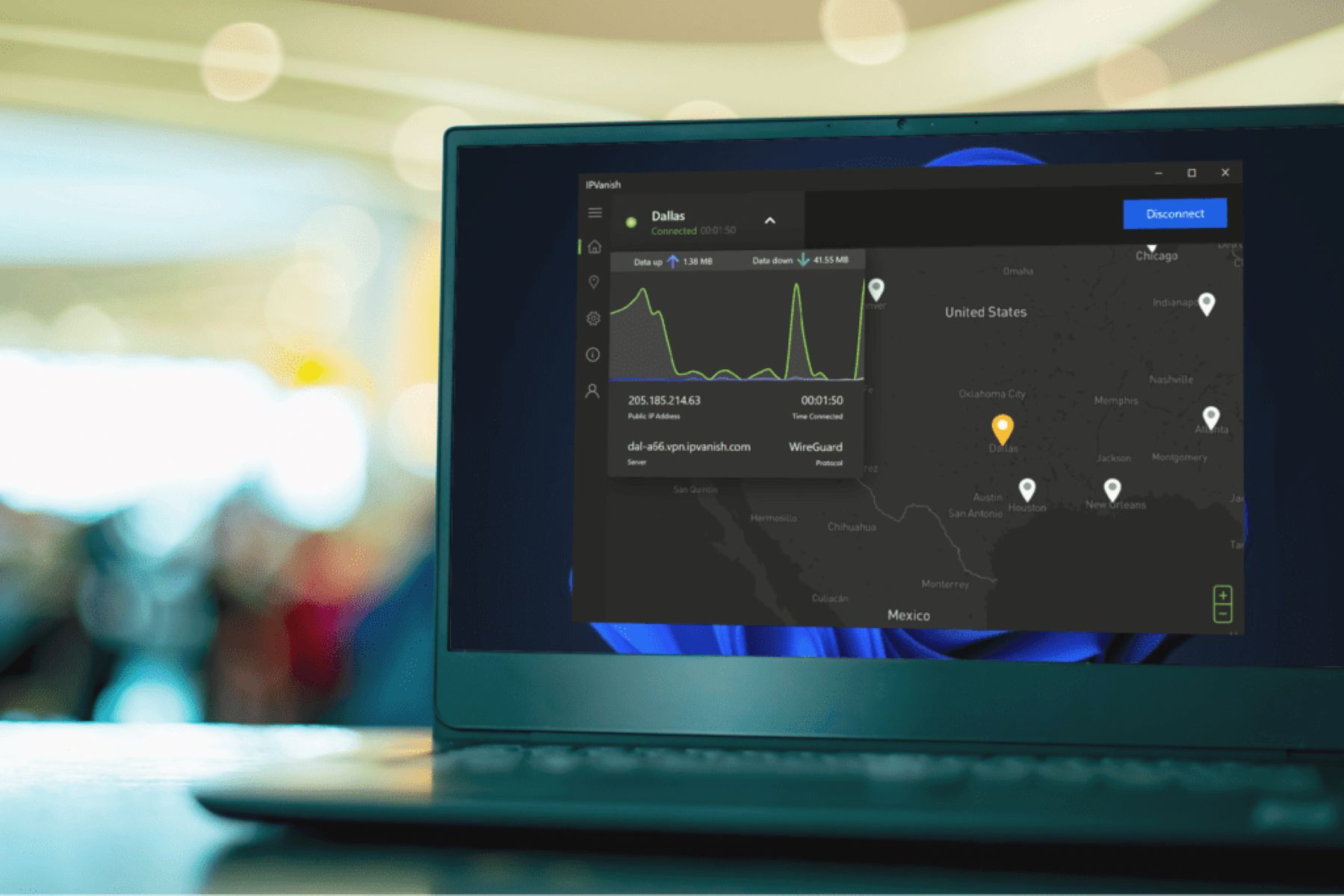Introduction
Welcome to the mysterious and often misunderstood world of the Dark Web. Have you ever wondered what happens to your personal information when it falls into the wrong hands? Well, on the Dark Web, your email address could be bought, sold, or even traded like a digital commodity. In this article, we will explore what the Dark Web is, how email addresses end up there, and most importantly, what you can do if your email is found on this hidden part of the internet.
The Dark Web, a part of the internet that is not indexed by search engines, is infamous for being a hotbed of illegal activities and a marketplace for stolen data. It is a hidden network where users can remain anonymous through the use of specialized software such as Tor or I2P. In this hidden world, cybercriminals can conduct their illicit business away from prying eyes.
One of the most prized assets on the Dark Web is personal information, and email addresses in particular have significant value. Cybercriminals collect and gather this information from various sources such as data breaches, phishing attacks, and malware infections. Once obtained, these email addresses can be used for spam campaigns, phishing attempts, or even sold to other cybercriminals.
Discovering that your email address is on the Dark Web can be a jarring experience. It brings to light the fact that your personal information is out there, and it could potentially be used against you. However, there are steps you can take to mitigate the risks and protect yourself from further harm.
In the following sections, we will guide you on how to find out if your email is on the Dark Web and what immediate actions you should take if it is. By following these steps, you can strengthen your digital security and minimize the chances of falling victim to cybercrime.
What is the Dark Web?
The Dark Web is a hidden part of the internet that cannot be accessed through traditional search engines like Google or Bing. It is a network that uses masked IP addresses to ensure the anonymity of its users. This anonymity allows users to engage in various activities without fear of being identified or traced.
Unlike the surface web, which consists of websites that are readily accessible and indexed by search engines, the Dark Web requires specialized software to access. The most common of these software is Tor (The Onion Router), which routes internet traffic through multiple layers, making it extremely difficult to track and trace users. Other alternatives include Freenet and I2P (Invisible Internet Project).
The Dark Web serves as a haven for various illegal activities. It hosts marketplaces where individuals can buy and sell drugs, weapons, counterfeit documents, and stolen data. It is also notorious for being a hub of hacking forums, where cybercriminals exchange knowledge and tools to carry out attacks. Additionally, it provides a platform for the distribution and consumption of explicit content, including child pornography.
While the Dark Web has gained a reputation for criminal activities, it’s essential to note that not everything on the Dark Web is illegal. Some individuals use it as a means of circumventing censorship or for private communications in countries with strict internet regulations. Whistleblowers and journalists, for example, may leverage the anonymity provided by the Dark Web to share sensitive information.
In summary, the Dark Web is a hidden network within the internet that enables users to remain anonymous and engage in various activities, both legal and illegal. Its hidden nature and anonymizing technologies make it challenging to police. As such, caution and vigilance are necessary when navigating the realm of the Dark Web.
How do emails end up on the Dark Web?
One may wonder how email addresses, which seem harmless, end up on the Dark Web. The truth is that cybercriminals employ various methods to obtain and collect email addresses, turning them into valuable assets for illicit activities.
Data breaches are a primary source of email addresses on the Dark Web. Hackers target companies and organizations, exploiting vulnerabilities in their systems to gain unauthorized access to databases containing user information. When a data breach occurs, email addresses, along with other personal details, can be stolen and eventually find their way onto the Dark Web.
Phishing campaigns also contribute significantly to leaking email addresses onto the Dark Web. Phishing is when cybercriminals send fraudulent emails that appear to be from reputable sources, such as banks or popular online platforms. These emails aim to deceive recipients into providing sensitive information, such as usernames, passwords, and email addresses. Once obtained, these email addresses can be used for malicious purposes or sold on the Dark Web.
Another method used to gather email addresses is through malware. Malicious software, such as keyloggers or spyware, can be surreptitiously installed on victims’ devices. These malware programs can capture keystrokes, including email addresses, and send the information to the attacker. The harvested email addresses can then be sold or used for nefarious activities on the Dark Web.
Furthermore, online services or platforms that suffer security breaches can indirectly contribute to email addresses appearing on the Dark Web. If users reuse their email addresses and passwords across multiple platforms, a breach on one website can give cybercriminals access to email addresses that they can then exploit on the Dark Web.
In summary, email addresses find their way onto the Dark Web through various means, including data breaches, phishing campaigns, malware, and reuse of credentials. It is vital to understand these methods to protect your email address and minimize the chances of becoming a victim of cybercrime.
How to find out if your email is on the Dark Web
Discovering whether your email is on the Dark Web is an essential step in safeguarding your digital security. Thankfully, there are several tools and services available that can help you check if your email address has been compromised and is being traded or sold on the Dark Web.
One popular service is Have I Been Pwned (HIBP). HIBP is a website created by security researcher Troy Hunt that allows users to check if their email address has been involved in any known data breaches. By entering your email address into the website’s search bar, it will check its extensive database and inform you if your email has been compromised.
Another useful tool is a Dark Web monitoring service. Several cybersecurity companies offer services that actively search the Dark Web for mentions of your email address or other personal information. These services scan forums, marketplaces, and other underground platforms to detect any instances of your information being traded or used illicitly. If they find any matches, they will alert you and provide guidance on the next steps to take.
Many of these monitoring services also offer a feature where you can input your email address and sign up for regular alerts. This means that if your email address pops up on the Dark Web in the future, you will be promptly notified, allowing you to take immediate action to secure your accounts.
It’s important to note that while these services can provide valuable insights into the security of your email address, they are not foolproof. They rely on the databases they have access to and may not capture every instance of your email address being compromised. Therefore, it’s crucial to practice good cybersecurity habits regardless of the results from these tools.
In summary, utilize tools like Have I Been Pwned and Dark Web monitoring services to check if your email is on the Dark Web. Regularly monitor your email address for any indication of compromise and be proactive in protecting your digital presence.
Steps to take if your email is found on the Dark Web
Discovering that your email address is on the Dark Web can be alarming, but it’s crucial to take immediate steps to protect yourself and minimize the potential risks. Here are some essential actions you should take if your email is found on the Dark Web:
1. Change your passwords: The first and most crucial step is to change the passwords of all your online accounts, especially those associated with the compromised email address. Create strong and unique passwords for each account to ensure maximum security.
2. Enable two-factor authentication: Implementing two-factor authentication (2FA) adds an extra layer of security to your accounts. It requires you to provide a second form of verification, such as a unique code sent to your phone, in addition to your password. Enable 2FA wherever possible to ensure that even if your password is compromised, an attacker would still need the secondary verification.
3. Monitor your accounts for suspicious activity: Pay close attention to your online accounts, including email, banking, social media, and other services, for any signs of unauthorized access or suspicious activity. If you notice anything unusual, such as unfamiliar logins or unexpected emails, take immediate action to secure your accounts and report any incidents to the respective service providers.
4. Use a password manager: Consider using a password manager to generate strong, unique passwords and securely store them. A password manager eliminates the need to remember multiple complex passwords and helps ensure that each account has a unique combination of credentials.
5. Be cautious of phishing attempts: Being on the Dark Web puts you at higher risk for phishing attempts. Cybercriminals may use your email address to send fraudulent emails that trick you into providing sensitive information. Be vigilant and double-check the authenticity of emails before clicking on any links or providing any personal information.
6. Contact your email provider: If your email address is compromised, reach out to your email provider for further guidance. They may be able to assist with additional security measures or provide advice on mitigating the impact of the compromise.
7. Educate yourself: Stay informed about cybersecurity best practices and ongoing threats. Regularly educate yourself on the latest techniques used by cybercriminals to ensure you are equipped with the knowledge necessary to protect your personal information.
In summary, if you discover that your email is on the Dark Web, take immediate action by changing your passwords, enabling two-factor authentication, monitoring your accounts, using a password manager, being cautious of phishing attempts, contacting your email provider, and staying informed. By following these steps, you can reduce the risks associated with a compromised email address and enhance your overall digital security.
Change your passwords
One of the most critical steps to take if your email is found on the Dark Web is to change your passwords. This step is essential in preventing unauthorized access to your accounts and minimizing the potential damage caused by the compromised email address. Here’s what you should do:
1. Prioritize your accounts: Start by identifying the accounts that are most critical or sensitive. These may include your email account, online banking, social media, and any other accounts that contain personal or financial information. Focus on changing the passwords for these accounts first.
2. Create strong and unique passwords: When changing your passwords, avoid using common or easily guessable combinations. Instead, create strong and unique passwords for each account. Include a mixture of uppercase and lowercase letters, numbers, and special characters. Avoid using personal information, such as names or birthdates, as part of your passwords.
3. Use a password manager: Consider using a password manager to generate and store secure passwords. Password managers can create complex passwords for you, store them securely, and automatically fill them in when needed. This eliminates the need to remember multiple passwords and reduces the risk of using weak or easily guessable combinations.
4. Don’t reuse passwords: Avoid the temptation to reuse passwords across different accounts. Using the same password for multiple accounts increases the risk of widespread compromise if one account is breached. If you find it challenging to remember multiple passwords, a password manager can help simplify the process for you.
5. Regularly update your passwords: Changing your passwords should not be a one-time event. Make it a habit to update your passwords regularly, preferably every three to six months. Regularly changing your passwords adds an extra layer of protection and reduces the likelihood of unauthorized access to your accounts.
6. Enable password recovery options: Take advantage of password recovery or account recovery options provided by your online services. Ensure that the recovery email or phone number associated with your accounts is up-to-date. This will allow you to regain access to your accounts in the event of a forgotten or compromised password.
7. Be mindful of your passwords: Keep your passwords confidential and avoid sharing them with anyone. Be cautious of entering passwords on shared or public devices, and always log out of your accounts when using them on unfamiliar or public computers.
Remember, changing your passwords is just the first step. It’s equally essential to adopt other security measures, such as enabling two-factor authentication and staying alert to phishing attempts, to enhance your overall digital security.
Enable two-factor authentication
Enabling two-factor authentication (2FA) is a crucial step in enhancing the security of your online accounts, especially if your email address is found on the Dark Web. 2FA adds an extra layer of protection by requiring an additional form of verification, alongside your password, to access an account. Here’s why you should enable 2FA and how to do it:
Why enable two-factor authentication?
Even if your password is compromised or stolen, 2FA prevents unauthorized access to your accounts since an attacker would also need the second form of verification, which is usually something you have with you, such as a mobile device or hardware token. This adds an extra layer of security and makes it significantly more challenging for cybercriminals to gain access to your account.
How to enable two-factor authentication:
1. Determine which accounts offer 2FA: Start by identifying which online accounts offer two-factor authentication. Many popular platforms and services, including email providers, social media networks, and online banking, support 2FA. Check the account settings or security options of each service to see if 2FA is available.
2. Choose your second form of verification: Typically, the second form of verification involves something you have, such as a smartphone, or something unique to you, such as a fingerprint or iris scan. The most common method is through an authenticator app, such as Google Authenticator or Authy, which generates time-based or one-time use codes.
3. Enable 2FA: Follow the instructions provided by each service to enable 2FA. This usually involves linking your account to the authenticator app or providing your phone number for receiving verification codes via SMS. Some services may offer alternative methods, such as email or hardware tokens, for 2FA.
4. Test the setup: After enabling 2FA, test the setup to ensure it’s working correctly. Confirm that you can receive verification codes or generate them through the authenticator app. This ensures that in the event of a login attempt or account recovery, you’re prepared to provide the necessary verification.
5. Backup codes: Some services offer backup codes that you can save in a secure location in case you lose access to your primary 2FA device. These codes can be used as a fallback method to regain access to your account if needed.
6. Regularly review and manage your 2FA settings: Periodically review and manage your 2FA settings. This includes removing devices or updating phone numbers associated with your 2FA accounts. Stay vigilant to any suspicious activity or unexpected changes in your 2FA settings.
Incorporating two-factor authentication adds an extra layer of security to your accounts, significantly reducing the risk of unauthorized access, even if your password is compromised. By enabling 2FA on your accounts, you enhance your overall digital security and protect yourself from potential attacks.
Monitor your accounts for suspicious activity
When your email address is found on the Dark Web, it becomes crucial to actively monitor your accounts for any signs of suspicious activity. Being vigilant and promptly addressing any unusual behavior can help protect your sensitive information and prevent further compromise. Here’s what you should do:
Regularly review your account activity: Take the time to review the activity on all your online accounts, including email, social media, banking, and shopping accounts. Look out for any unfamiliar logins, suspicious transactions, or changes to your account settings. If you notice anything out of the ordinary, investigate and take immediate action.
Set up account alerts: Most online services, including email providers and financial institutions, offer account alert features that notify you of specific activities. Enable these alerts to receive notifications about login attempts, unusual transactions, or changes to your account information. By setting up alerts, you can detect any indications of unauthorized access or suspicious events promptly.
Monitor email forwarding and filtering: Check your email settings for any unexpected email forwarding or filtering rules. Hackers may set up forwarding rules to receive copies of your emails or filter specific emails to hide their activities. Regularly review and verify that your email settings align with your preferences.
Review login logs: Some services provide login logs that allow you to track the times and locations of recent logins to your accounts. Regularly review these logs and compare them to your own login activity. If you notice any logins from unfamiliar locations or at unusual times, it could indicate a security breach.
Use reputable security software: Install and regularly update reliable security software on your devices. These software packages can detect and block potential threats, such as malware or phishing attempts, helping you stay protected while browsing the internet and accessing your accounts.
Be cautious of suspicious emails or messages: Pay attention to phishing attempts or suspicious emails that may try to trick you into sharing sensitive information. Be wary of unexpected emails asking for personal details, passwords, or banking information. Avoid clicking on suspicious links or downloading attachments from unknown sources, as they may contain malware or lead to fraudulent activities.
Report any suspicious activity: If you detect any suspicious activity on your accounts, report it immediately to the respective service provider or financial institution. They can help investigate the situation, secure your account, and provide guidance on further actions to take.
Regularly change your passwords: While monitoring your accounts, consider regularly changing your passwords, even if you haven’t noticed any suspicious activity. Changing your passwords periodically adds an extra layer of protection and minimizes the risk of unauthorized access to your accounts.
By proactively monitoring your accounts for suspicious activity, you can quickly respond to any security threats or unauthorized access. Regular reviews, account alerts, and cautiousness greatly contribute to maintaining the security and integrity of your online presence.
Use a password manager
Using a password manager is a powerful way to enhance your online security and protect your accounts, especially if your email address is found on the Dark Web. Password managers provide a secure and convenient solution for generating and managing strong, unique passwords for each of your accounts. Here’s why you should use a password manager:
Generate strong and unique passwords: Password managers can create complex passwords consisting of a combination of letters, numbers, and special characters. These passwords are often longer and more random than what most people typically use. By generating strong and unique passwords, a password manager can significantly improve the security of your accounts.
Store passwords securely: Password managers provide a secure vault where you can store all your passwords. This encrypted storage ensures that your passwords are protected from unauthorized access. Most password managers also include additional security features, such as multi-factor authentication, to further safeguard your password vault.
Convenience and ease of use: With a password manager, you only need to remember one master password to access your vault. The password manager then takes care of automatically filling in your usernames and passwords whenever you visit a website or log into an application. This eliminates the need to remember multiple passwords or rely on easily guessable combinations.
Sync across devices: Password managers often offer syncing capabilities across multiple devices. This means you can access your passwords and login information from your computer, smartphone, or tablet, ensuring that you have your passwords wherever you need them.
Avoid password reuse: Password reuse is a common security mistake that puts your accounts at risk. With a password manager, you can generate unique passwords for each account without the need to remember them all. This eliminates the temptation to reuse passwords and minimizes the impact if one account is compromised.
Easily manage and update passwords: Password managers allow you to easily update and manage your passwords. You can change passwords whenever necessary, ensuring your accounts are regularly protected with new and strong combinations. Additionally, if a service you use experiences a data breach, you can quickly update the password for that account without affecting your other accounts.
Securely share passwords: Many password managers provide functionality for securely sharing passwords with family or team members. This enables convenient collaboration while maintaining the security and integrity of the shared passwords.
Overall, using a password manager is an effective way to generate strong, unique passwords and securely store them. By adopting a password manager, you can significantly improve your online security, reduce the risk of unauthorized access to your accounts, and ultimately protect your digital identity.
Be cautious of phishing attempts
When your email address is found on the Dark Web, it’s crucial to be cautious of phishing attempts. Cybercriminals often use phishing as a means to trick individuals into revealing sensitive information, such as passwords or credit card details. By staying vigilant and recognizing the signs of a phishing attack, you can protect yourself from these fraudulent attempts. Here’s what you should know and how to avoid falling victim to phishing:
Understand what phishing is: Phishing is a form of cyber attack where attackers impersonate legitimate organizations or individuals to deceive victims. They typically do this through fraudulent emails, text messages, or even phone calls. The goal is to trick recipients into revealing personal information or performing actions that can compromise their accounts or devices.
Be wary of unsolicited emails or messages: Be cautious of emails or messages that appear unexpectedly or from unknown senders. Avoid opening attachments or clicking on links in such emails without verifying the sender’s legitimacy.
Pay attention to email address and URL discrepancies: Always examine the sender’s email address and the URLs in emails or messages. Phishing attempts often use email addresses or URLs that mimic legitimate ones but contain slight variations or misspellings. Hover over links to reveal the true destination before clicking on them.
Look out for urgent or alarming language: Phishing emails often create a sense of urgency or fear to prompt immediate action. They may claim that your account has been compromised or that you need to verify your information urgently. Be skeptical of such tactics and independently verify the information through official channels.
Verify before sharing information: Legitimate organizations typically do not request sensitive information, such as passwords, over email or text messages. If you receive a request for such information, even from an apparently trusted source, err on the side of caution and verify the request through official channels before sharing any details.
Keep your software and devices up to date: Regularly update your operating system, web browsers, and security software to protect against known vulnerabilities that phishers may exploit. Software updates often include security patches that address potential weaknesses.
Be cautious of pop-up windows and forms: Phishing attempts can take the form of pop-up windows or fake forms that ask for personal information. Avoid providing any information in pop-ups that appear suspicious or out of context. Instead, visit the official website directly to ensure the security of your data.
Use anti-phishing features and tools: Enable anti-phishing features in your email service or web browser, as they can help detect and block known phishing attempts. Additionally, consider using anti-phishing extensions or plugins that provide an extra layer of protection while browsing the internet.
Report phishing attempts: If you receive a phishing email or encounter a suspicious website, report it to the relevant authorities or the organization being impersonated. Reporting phishing attempts helps protect others from falling victim to similar attacks.
By being cautious and staying vigilant, you can protect yourself from phishing attempts. Always verify the authenticity of emails, links, and requests for personal information before taking any actions that could jeopardize your account security.
Conclusion
Discovering that your email address is on the Dark Web can feel unsettling, but it’s important to take immediate action to protect yourself. By understanding the Dark Web and its implications, monitoring your accounts, and implementing vital security measures, you can minimize the potential risks and maintain control over your digital presence.
Take advantage of tools like Have I Been Pwned and Dark Web monitoring services to check if your email address has been compromised and monitor for any future compromises. Change your passwords regularly and utilize a password manager to generate strong, unique passwords for each of your accounts. Enable two-factor authentication wherever possible to add an extra layer of security to your accounts.
Be diligent in monitoring your accounts for any signs of suspicious activity, such as unfamiliar logins or unexpected emails. Stay cautious of phishing attempts and educate yourself on the latest phishing techniques to protect yourself from falling victim to such fraudulent schemes.
Remember to keep your devices and software up to date, as vulnerabilities can be exploited by cybercriminals. Regularly review your security settings, enable anti-phishing features, and report any phishing attempts to help protect others.
While it can be disconcerting to discover that your email address is on the Dark Web, following these proactive steps will significantly reduce the likelihood of further harm and enhance your overall digital security. By remaining informed, adopting good security practices, and staying vigilant, you can safeguard your personal information and maintain control over your online presence.

























